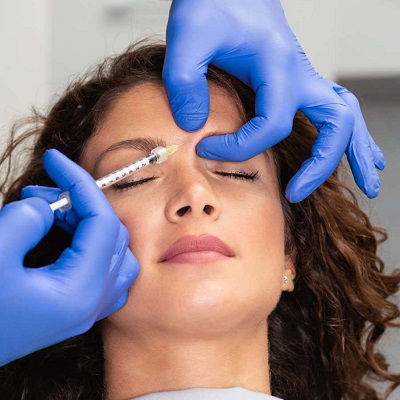Botox Injections for Wrinkles: How Effective Is It in Reducing Fine Lines?
Introduction
In the quest for youthful, smooth skin, many have turned to various cosmetic procedures, with Botox injections being one of the most popular options. Known for its ability to temporarily diminish the appearance of fine lines and wrinkles, Botox has become a common choice for those seeking a non-surgical solution to aging skin. This article explores the effectiveness of Botox injections Muscat in reducing fine lines, examining how it works, its benefits, potential side effects, and considerations for those thinking about this treatment.

Understanding Botox
What is Botox?
Botox is a brand name for botulinum toxin type A, a neurotoxin produced by the bacterium Clostridium botulinum. Despite its origins in a potentially harmful bacterium, when used in controlled doses, Botox can be safely administered to relax specific muscles. In the cosmetic world, Botox is predominantly used to reduce the appearance of wrinkles and fine lines by temporarily paralyzing the underlying muscles.
How Botox Works
Botox injections target the neurotransmitters that send signals from nerves to muscles. By blocking these signals, Botox causes the muscles to relax, which prevents them from contracting. This relaxation smooths out the overlying skin, leading to a reduction in the appearance of dynamic wrinkles—wrinkles that form as a result of muscle movement, such as those on the forehead, between the eyebrows, and around the eyes.
Effectiveness in Reducing Fine Lines
Immediate and Long-Term Results
The effects of Botox injections are typically visible within a few days, with optimal results appearing around one to two weeks after treatment. The reduction in fine lines and wrinkles can last for approximately three to six months, depending on the individual and the specific area treated. To maintain results, repeat injections are usually necessary.
Areas of Treatment
Botox is most effective on dynamic wrinkles, which are caused by muscle contractions. Common treatment areas include:
- Forehead Lines: Horizontal lines that appear when raising the eyebrows.
- Crow’s Feet: Wrinkles around the outer corners of the eyes, often exacerbated by smiling or squinting.
- Frown Lines: Vertical lines between the eyebrows, also known as glabellar lines, which are formed by frowning or concentrating.
For static wrinkles—those that are present even when the face is at rest—Botox can provide some improvement, but the results may be less pronounced. Combining Botox with other treatments, such as dermal fillers or laser therapy, can enhance overall effectiveness.
Benefits of Botox Injections
Non-Surgical Solution
One of the primary advantages of Botox is that it offers a non-surgical approach to wrinkle reduction. Unlike more invasive procedures, Botox injections require minimal downtime and can often be performed during a short office visit.
Minimal Recovery Time
Patients typically experience only mild redness or swelling at the injection sites, which resolves quickly. Most people can resume their regular activities immediately after the procedure.
Proven Safety and Efficacy
Botox has been extensively studied and is FDA-approved for cosmetic use. When administered by a qualified professional, it is generally considered safe and effective. Its ability to provide noticeable improvements with minimal risks makes it a popular choice for many.
Potential Side Effects and Risks
Common Side Effects
While Botox is generally safe, some individuals may experience side effects such as:
- Bruising or Swelling: Temporary and usually resolves within a few days.
- Headaches: Some people report mild headaches following the procedure.
- Drooping Eyelids or Eyebrows: Rare but possible if the injection affects unintended muscles.
Rare Complications
In very rare cases, more serious complications can occur, including:
- Allergic Reactions: Severe but uncommon.
- Difficulty Swallowing or Breathing: Very rare, but these symptoms should be reported to a healthcare provider immediately.
Considerations Before Getting Botox
Consultation with a Professional
Before undergoing Botox treatment, it is crucial to consult with a board-certified dermatologist or plastic surgeon. They can assess your suitability for the procedure, discuss your aesthetic goals, and determine the appropriate treatment plan.
Understanding Costs
The cost of Botox can vary widely depending on the geographic location, the provider’s expertise, and the number of units required. Typically, Botox is priced per unit, with multiple units needed to treat larger areas or achieve more significant results.
Post-Treatment Care
After receiving Botox injections, it is advisable to avoid rubbing or massaging the treated areas for at least 24 hours. Following your provider’s aftercare instructions will help ensure the best possible results and minimize the risk of complications.
Conclusion
Botox injections offer an effective, non-surgical solution for reducing fine lines and wrinkles caused by muscle movement. With its ability to provide noticeable improvements with minimal downtime, it has become a popular choice among those seeking to maintain a youthful appearance. While generally safe and effective, it is important to consult with a qualified professional to ensure that Botox is the right option for your specific needs and to understand both the benefits and potential risks associated with the treatment. As with any cosmetic procedure, informed decision-making and realistic expectations are key to achieving satisfactory results.
